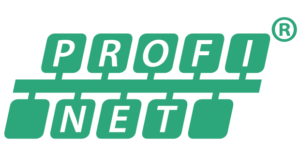Planning a development roadmap for a PROFINET project is critical for a smooth process and on-time product release. There are four basic steps (and partners) you’ll need to work with to complete the project. The first and last, joining PI and applying for a product certificate, are pretty straightforward transactions. Everything in between is where the interesting stuff happens and where you have to make tradeoffs.
Step 1: Join PI
While this step isn’t strictly necessary, it’s worth it for two reasons:
- Access to the PROFINET specification and test suite
- A deep discount on the fee you pay to the PI Certification Office at the end of your development
Joining PI via your local Regional PI Association (RPA) also gives you marketing leads and access to potential customers you can’t obtain any other way. For more information on your local RPA, look them up on PI’s website. If you’re in North America, you can join PI North America directly.
On-Demand PROFINET Developer Training
The PROFI Interface Center provides product development training for your team tailored to meet your needs.
These classes are intensive, immersive experiences designed to bring a development team up to speed on PROFINET communications and best practices. The lab exercises can be used as the groundwork for developing a new PROFINET device, while the concepts can be used to implement a device on an existing platform.
For more information, contact us or visit: http://ondemand.profiinterfacecenter.com/
Step 2: Develop your product
Development is always a balancing act. PROFINET’s flexibility means that some design decisions must be made early in the process. Marketing may demand that your device supports the fastest communication speeds, but R&D may only have the budget for a less capable PROFINET implementation. What’s “good enough” for your market? What does an efficient PROFINET application look like to an end-user? How much data should you pack into the cyclic channel and what should be placed in the acyclic channel? These kinds of questions and decisions require a comprehensive knowledge of the protocol, and that requires expertise. Whether that knowledge comes from your PROFINET technology vendor or from investment in training for your team, it’s critical you don’t “design in the dark” without a clear idea of what the final product should do.
Step 3: Test your product
The PROFINET certification test can be performed at any accredited PI Test Lab( The PROFI Interface Center is just one of a worldwide network). However, the PROFINET Certification Test is just that – a test. At the end of it, all you’ll receive is a formal test report.
Step 4: Certification
To turn that test report into a product certificate you’ll need to get back in touch with a different branch of PI, the PI Certification Office. Certification is a paperwork process that goes through the PI Certification Office (PICO) in Karlsruhe, Germany. They have their own application form for you to fill out, and will require a fee along with your test report to grant a PROFINET certificate. Once granted, that certificate is valid for three years. Because firmware gets updated, features get added, and products adapt to meet their market needs. PI requires device re-testing every three years to keep their certificates current.

 For more information, download the full White Paper:
For more information, download the full White Paper: